In today’s competitive business environment, an effective intellectual property (IP) statement is essential for protecting a company’s innovations, creations, and brand. Crafting a strong IP statement requires a deep understanding of intellectual property, its significance, and the specific needs of the business.
Understanding Intellectual Property
Definition and Importance of Intellectual Property
Intellectual property can be defined as creations of the mind, including inventions, literary and artistic works, designs, symbols, names, and images used in commerce. The importance of intellectual property lies in its ability to grant creators rights over their inventions and creations, fostering innovation and preventing unauthorized usage.
IP rights allow businesses to protect their competitive edge, enhance branding, and build a loyal consumer base. In a world where ideas can be replicated quickly, having a solid IP framework not only safeguards unique offerings but also increases the overall value of a business. Furthermore, intellectual property plays a crucial role in economic growth by encouraging investment in research and development. When inventors and creators feel confident that their innovations will be protected, they are more likely to invest time and resources into developing new products and services, which can lead to job creation and increased market competition.
Different Types of Intellectual Property
Intellectual property comprises several forms, each serving different purposes. The major types include:
- Patents: Protect inventions and new processes for a specific period, usually twenty years.
- Trademarks: Safeguard symbols, names, and slogans that distinguish goods and services.
- Copyrights: Protect original works, such as literature, music, and art.
- Trade Secrets: Include confidential information providing a competitive advantage.
Understanding these types allows businesses to implement targeted strategies for their IP management, ensuring comprehensive coverage against infringement. For instance, a tech company might patent its innovative software algorithms while also trademarking its brand name and logo to create a strong market presence. Additionally, companies often rely on trade secrets to protect proprietary processes that give them an edge over competitors, such as unique manufacturing techniques or customer lists. This multifaceted approach to intellectual property not only fortifies a company’s market position but also encourages a culture of creativity and innovation within the organization.
The Role of an IP Statement
Why Your Business Needs an IP Statement
An IP statement serves as a foundational document for any business’s IP strategy. It outlines the types of intellectual property the business owns and how that IP is managed. Creating an IP statement is not merely a formality; it is a crucial step in establishing the framework for systematic management and protection of intellectual property.
A comprehensive IP statement helps minimize risks related to IP infringement and ensures that businesses can enforce their rights effectively. Moreover, it demonstrates a commitment to protecting intellectual property, which can enhance a business’s reputation among stakeholders. In an increasingly competitive market, having a well-defined IP strategy can also provide a significant advantage, allowing businesses to leverage their intellectual property for growth and innovation. For instance, a strong IP statement can facilitate partnerships and collaborations, as potential partners are more likely to engage with a business that clearly understands and protects its IP assets.
Key Elements of an IP Statement
When crafting an IP statement, several key elements should be included:
- Identification of IP Assets: List all intellectual property owned by the business.
- Ownership Details: Define who holds the rights to each piece of IP, including co-ownership situations.
- Management Responsibilities: Specify who is responsible for monitoring and enforcing IP rights.
- Usage Guidelines: Provide protocols on how the IP can be used internally and by third parties.
By incorporating these elements, businesses can create a robust IP statement that meets their specific needs. Additionally, it is essential to regularly review and update the IP statement to reflect any changes in the business environment or IP landscape. This proactive approach not only ensures compliance with evolving laws and regulations but also helps in identifying new opportunities for IP development. For example, as a business grows and diversifies its offerings, new forms of intellectual property may emerge, necessitating updates to the IP statement to include these assets.
Furthermore, engaging with legal experts during this process can provide valuable insights into best practices and potential pitfalls, ultimately strengthening the business’s IP strategy.
Steps to Craft a Strong IP Statement
Identifying Your Intellectual Property
The first step in developing a strong IP statement is to identify all forms of intellectual property within the organization. This includes not only registered patents or trademarks but also unregistered rights, such as trade secrets and copyrights.
To effectively catalog your IP assets, consider conducting a thorough audit that includes:
- Reviewing business inventions, designs, and branding elements.
- Consulting with employees across departments to uncover potential IP.
- Asking legal experts for assistance to ensure compliance with IP laws.
Additionally, it may be beneficial to implement an IP management system that can help track and manage these assets over time. Such a system can provide a centralized database where all forms of IP are documented, making it easier to monitor their status and value. This proactive approach not only aids in the identification process but also enhances the organization’s ability to leverage its IP strategically in the marketplace.
Drafting the IP Statement
Once your IP assets are identified, the next step involves drafting the IP statement. This document should be clear and concise, articulating the key components discussed earlier. Utilize straightforward language and ensure it is comprehensible to all stakeholders.
Engaging stakeholders in this process can enhance the quality and acceptance of the IP statement. Conduct meetings or workshops to discuss its purpose and solicit input, which can lead to a more comprehensive document. Involving various departments, such as marketing, R&D, and legal, can provide diverse perspectives that enrich the content and ensure that all potential IP is considered. Furthermore, this collaborative approach fosters a culture of awareness and respect for intellectual property within the organization.
Reviewing and Updating Your IP Statement
After drafting the IP statement, it should not be regarded as a static document. Regular reviews and updates are essential to adapt to changes in the business environment, such as the introduction of new technologies, changes in IP laws, or shifts in business strategy.
Establish a schedule for periodic reviews, such as annually or bi-annually. This proactive approach ensures the IP statement remains relevant and effective, safeguarding the company’s interests. During these reviews, consider not only the current state of your IP but also anticipate future trends that may impact your assets. Incorporating insights from market research and competitive analysis can provide valuable context, allowing the organization to make informed decisions regarding its IP strategy and investments.
Legal Considerations for IP Statements
Intellectual Property Laws and Regulations
Understanding the legal landscape surrounding intellectual property is crucial when crafting an IP statement. Different jurisdictions have varying laws and regulations that govern IP rights, thus businesses must stay informed about the applicable laws in their operations.
Consulting with legal professionals can offer insights into the nuances of IP law, including changes that may affect how an IP statement should be structured. Compliance with these laws is essential to validate and enforce the IP rights outlined in the statement. Additionally, businesses should be aware of international treaties, such as the Agreement on Trade-Related Aspects of Intellectual Property Rights (TRIPS), which set minimum standards for IP protection across member countries. Understanding these treaties can help businesses navigate cross-border IP issues more effectively, ensuring that their rights are safeguarded in multiple jurisdictions.
Legal Implications of a Weak IP Statement
A poorly crafted or vague IP statement can lead to significant legal repercussions. Without clear definitions and responsibilities, businesses may face challenges in enforcing their IP rights, resulting in potential losses from infringement.
A weak IP statement might also expose the business to greater risks from competitors or unaffiliated third parties. Investing time and resources in a robust and legally sound IP statement can ultimately save businesses from costly disputes and ensure that their rights are protected. Furthermore, a strong IP statement can enhance a company’s reputation and credibility in the marketplace, signaling to partners and consumers that the business takes its intellectual property seriously. This can foster trust and encourage collaborative relationships, which are essential for innovation and growth in today’s competitive landscape. Additionally, having a well-defined IP statement can facilitate better internal communication regarding IP management, ensuring that all employees understand their roles and responsibilities in protecting the company’s intellectual assets.
Best Practices for IP Statement Management
Regular Audits and Updates
Best practices for managing an IP statement include conducting regular audits and updates. Routine checks can highlight any new developments in IP creation and help identify any weaknesses or gaps in the existing IP strategy.
Integrating a process of continuous improvement can enhance the effectiveness of your IP statement over time, ensuring that it evolves in response to changes within the organization or the wider industry landscape. This proactive approach not only safeguards existing assets but also positions the organization to capitalize on emerging opportunities in the market. By staying ahead of trends and technological advancements, businesses can adapt their IP strategies to better align with their overall objectives and competitive landscape.
Training and Awareness for Employees
Employee training and awareness are critical in promoting the importance of intellectual property and the IP statement within the organization. Conducting workshops or seminars can help employees understand their roles in protecting IP and the implications of noncompliance.
Empower employees by fostering a culture of respect for intellectual property, encouraging them to be vigilant in recognizing and reporting potential infringement or misuse of IP assets. Additionally, providing resources such as easy-to-understand guides or online training modules can further enhance their understanding. Regularly updating employees about changes in IP law or internal policies can also keep the topic fresh and relevant, ensuring that everyone remains engaged and informed about their responsibilities regarding IP protection.
Seeking Legal Advice for IP Statement Management
Lastly, seeking legal advice is an indispensable part of effective IP statement management. Engaging IP attorneys can provide valuable guidance in navigating the complexities of IP laws and ensuring that the IP statement is adequately formulated and legally sound.
By working closely with legal professionals, businesses can ensure compliance with relevant laws and best practices, thereby strengthening their overall IP strategy. Furthermore, legal experts can assist in drafting robust agreements that protect IP assets, such as nondisclosure agreements (NDAs) and licensing contracts. This collaboration can also extend to conducting risk assessments to identify potential vulnerabilities in the IP portfolio, allowing organizations to take preemptive measures against infringement or misappropriation of their intellectual property.
Conclusion
Crafting a strong IP statement is a multifaceted process that requires an in-depth understanding of intellectual property, its various forms, and the specific needs of a business. By identifying assets, drafting a comprehensive statement, understanding legal implications, and following best practices, organizations can protect their innovations and effectively manage their intellectual property. This strategic approach not only mitigates risks but also enhances a business’s long-term success and competitive position in the market.
Computer Packages Inc. (CPI) is a privately owned IP management company with over fifty years of experience serving the IP community. Our mission is to be the most trusted partner in safeguarding clients’ IP assets with innovative IP management software and annuity services. Learn how we specialize in IP patent, trademark, and annuity management by exploring our services.


